pa
now browsing by tag
PA Arts and Culture Advocacy: Engaging Students in the Political Side of the Arts
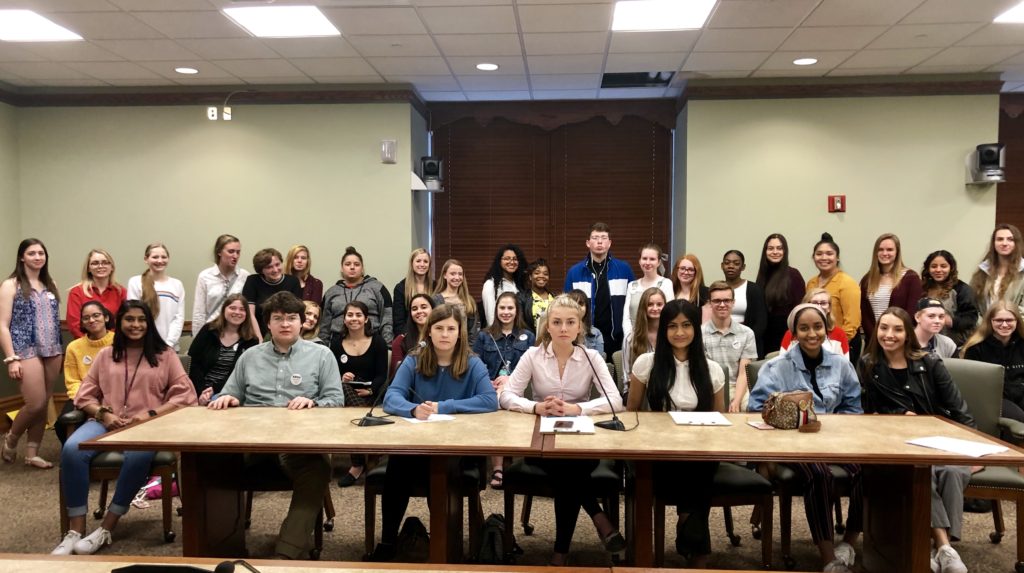
Post by PAEA board member Jessica Kirker
“I only need to pass my ‘important’/core subjects.”
“[Student] is going to have to miss art today because of discipline/make-up work/test prep.”
“I can’t expect [child] to do well in art, I can’t even draw a stick figure.”
“It must be fun/easy to teach a class that all students enjoy.”
“How can your really grade art? Art can just be whatever you want, right?”
I am certain, beyond a doubt, that I have the best job in the world. If you are reading this blog, you probably do to! We, as art teachers, have so much to be grateful for. We have the privilege of enlivening the creative spirits of those whom we teach. Art teachers can foster a means to communicate beyond what a student expects or imagines of themselves. We can open eyes, heads, and hearts to media and methods that our students didn’t know existed. We get the chance to re-experience the joys, excitement, and apprehension of these materials and tools for the first time over and over through our students. While students transition through grades and classroom teachers, we get to stay with students for years and have the chance to build meaningful and lasting relationships.
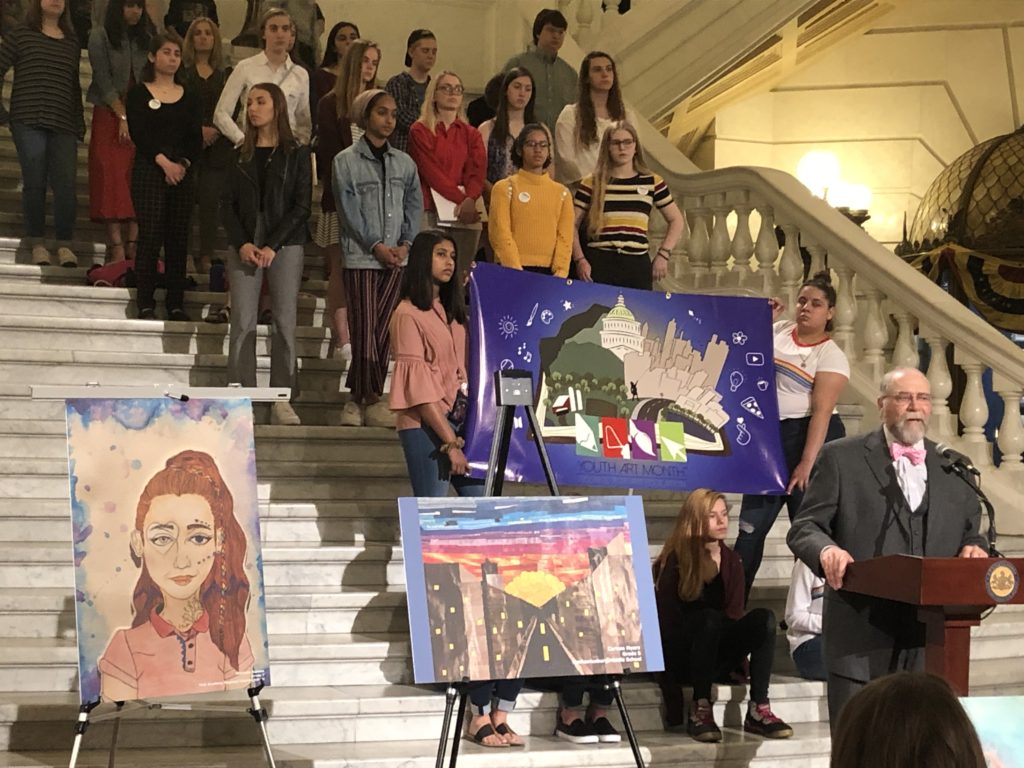
However, some times, (ok, many times) we have to grit our teeth to the misnomers that come from a lack of understanding about what we do, and most importantly, why we do it. The readers of this blog know that we are not the educators of fluff, fun time, brain breaks, hobby hour, extra recess, or easy ‘A’s’. Sometimes these misnomers are cruelly condescending and other times they are ignorantly based on affectionate nostalgia. Whatever the reason, these perspectives are damaging to the future of art education for all students and we can not allow them to continue.
NAEA and PAEA both provide strong support for art education advocacy. (Have you checked out their websites lately? NAEA: https://www.arteducators.org/advocacy PAEA: https://paeablog.org/blog/.) NAEA offers a multitude of materials to assist art educators in preparing to advocate to school, community, and legislative audiences. These well-articulated resource guides plainly and effectively describe the importance of art education for all students and are easy to be shared with educational community stakeholders.
I am proud to report that this year some members of the PAEA Secondary Division incorporated high school students into their advocacy plans for PA Art Education by bringing approximately 50 high school students together for Pennsylvania Arts and Culture Advocacy Day in Harrisburg on May 1. This event was sponsored by The Citizens for the Arts in PA and exposed students to the political side of the arts while showing our legislators the importance of art education on a very tangible and personal level. The art teachers from Norristown Area HS, Garnet Valley HS, Cumberland Valley HS, Conrad Weiser HS, and South Western HS each brought between 5 and 15 students to participate in the day’s events. The majority of these students were members of their school’s National Art Honor Society Chapter.
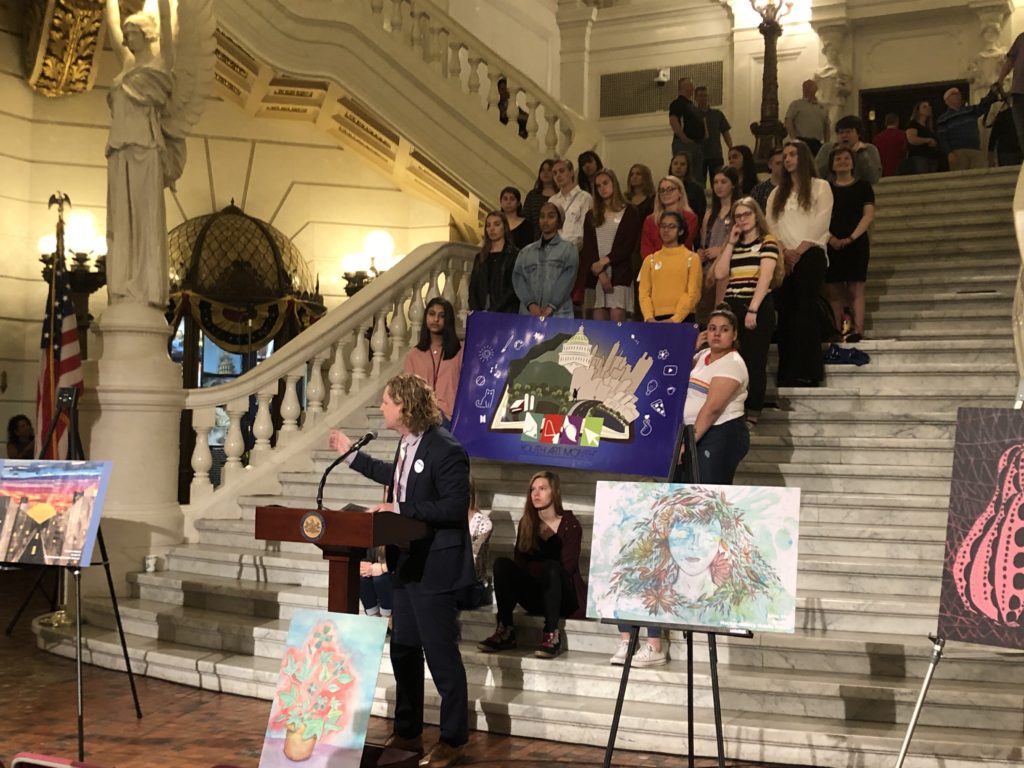
The day began with an Arts Caucus breakfast followed by a press conference in the Capitol Rotunda. During this time, some high school art students proudly displayed the PAEA 2019 Advocacy Flag in the backdrop for the speakers. Easels of PAEA Youth Art Month surrounded the podium and Rotunda stairs, attracting the attention of those that passed by. Meanwhile, other art students grabbed their pencils/pens/markers/charcoal and began drawing the architectural landscape of the building as observers got the opportunity to see our talented students at work. These working artists put the process of their craft in the limelight to the capital audience.

After the press conference, some students took part in tours while others continued drawing exercises or moved on to legislative meetings. Jenny Hershour of Citizens for the Arts in PA coordinated the meetings between participating schools and local legislators so that they could engage in conversations about the importance of arts education from the perspective of those whom are directly served. This gave the students the chance to speak from the heart about their passions, inspirations, educational experiences, and hopes for the future of art education.
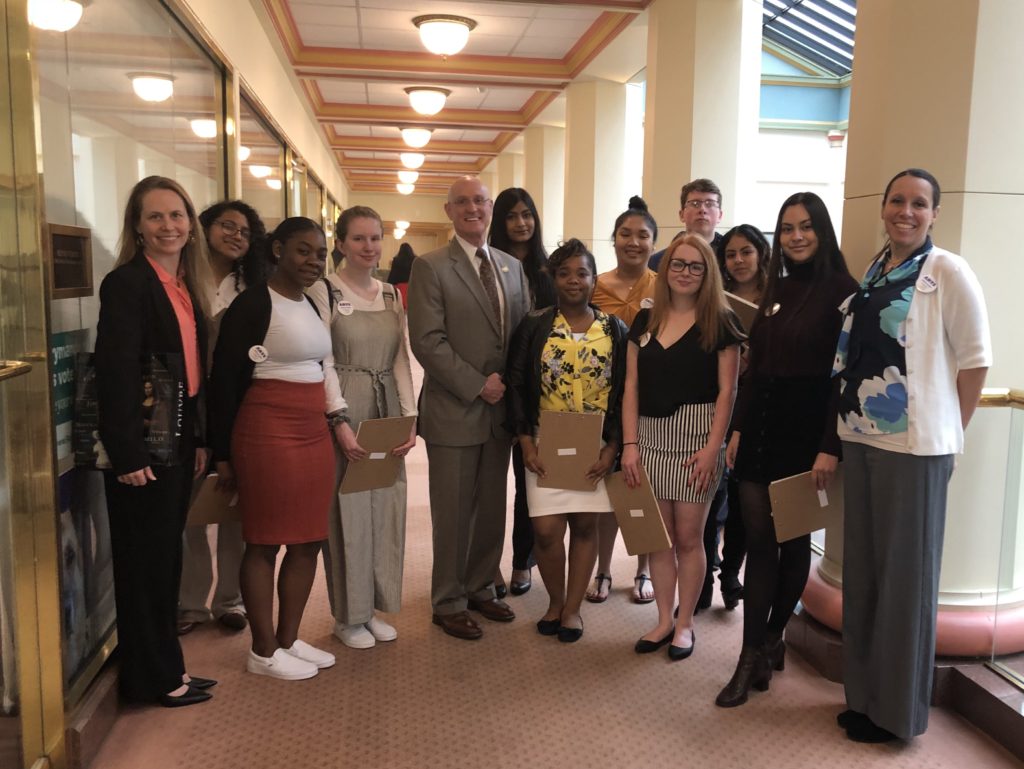
All students attending had the chance to get together over lunch where they were assigned to tables with youth from other schools. Uncomfortable at first (as you can expect of any high schooler), the tables transitioned from shy nerves to lively chatter and laughter by the end of the afternoon. With the conclusion of
Not only did the students get the chance to have their voices heard and create visibility for the visual arts during this event, I believe the most impactful outcome of the day was the effect that this even had on our students. Many high school art students are familiar with the misnomers surrounding art classes. By the time they have reached high school or advance level classes, there has been some tough choices to be considered. Do I take another year of language or try for AP studio? Do I need another math class or can I take Art II? Will it affect my GPA if I take non-weighted art classes? Do I want a career in art? Whatever their reason, these students have chose the path of including visual art into their educational path, and they might have had to defend this choice to peers, teachers, or family members. Are they prepared to successfully articulate their position? We, as members of PAEA/NAEA have been prepped for these conversations, but what about our students?
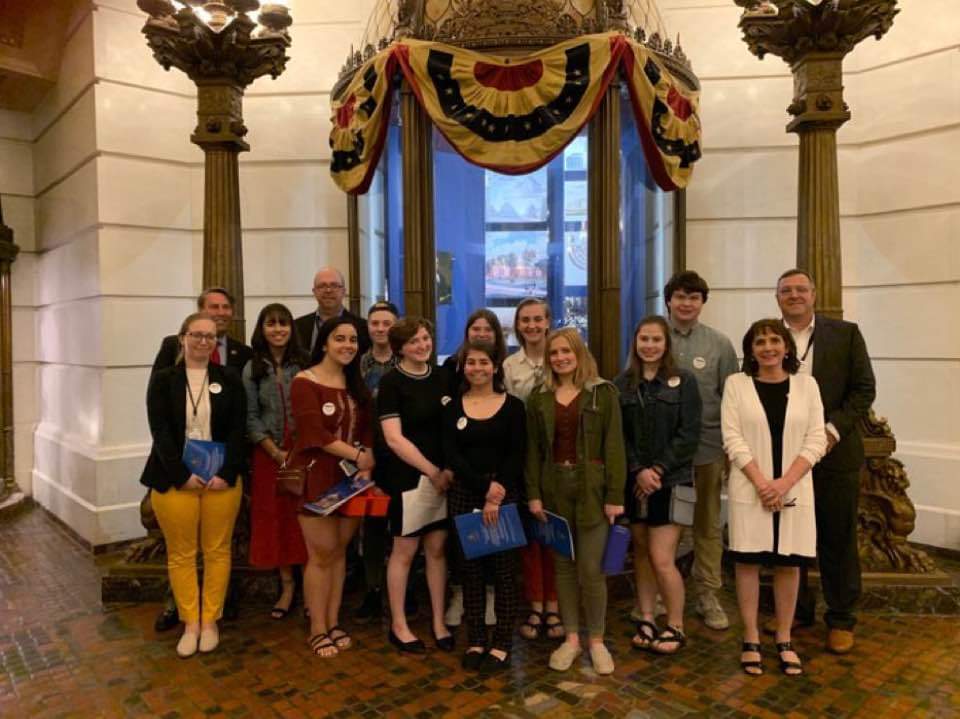
If a student is going to join the art world as full-time or part-time professional artist or art educator, patron of the arts, or supporter of the arts, s/he are members of an arts community that does not exist in the solitude of his/her own space. We teach our students that art is social, political, emotional, and environmental. Therefore, engaging the arts world is also a socio-political activity. If we teach students how to make art, talk about art, analyse art, and write about art, then we also need to consider it our duty to teach our students to be citizens for the arts.
There is evidence to support the notion that regular exposure to art classes enhances proficiency in math and reading. Can we look to sociology to enhance our understanding of art or government/social studies classes to enhance our roles (or our students’ roles) as art advocates? It is not rare for my high school art students to believe that their passion for art is not entwined with politics, but that is far from accurate. I often remind them that that every class, every dollar spent on classroom materials, and the mere availability of the classroom/space/instruction is a product of a local/state/federal legislative decision.
By the time a student reaches an advanced level high school art class, they should become aware that art class is not a privilege for a few, but a right to all as per ESSA. They should also be aware of the local and national legislative trends regarding arts in education. If they are going to become engaged in the art world as a youth and adult, they have to understand the role of free and adequate public arts education to sustain the future of arts in their community, state, and country. Students also need to understand their role as a voting citizen, a voice for their community, and an advocate for their own passions.

Participation in PA Arts and Culture Advocacy Day not only put a visual presence of visual arts education at work, but it gave students a chance to witness the democratic process and what it means to be an advocate for their cause. I encourage all PAEA/NAEA members to continue their advocacy efforts in their school, community, state, and national forums. I also encourage you to invite your students, parents, and colleagues to act as advocates for art education. If we fail to address the political nature of arts funding, access, and education, then we fail to educate the complete picture of the artworld in the 21st century.
Jessica Kirker, PhD is the PAEA Secondary Division Director. She teaches art at Norristown Area High School and is an Adjunct Professor of Art Education and Community Arts Practices at Temple University Tyler School of Art.

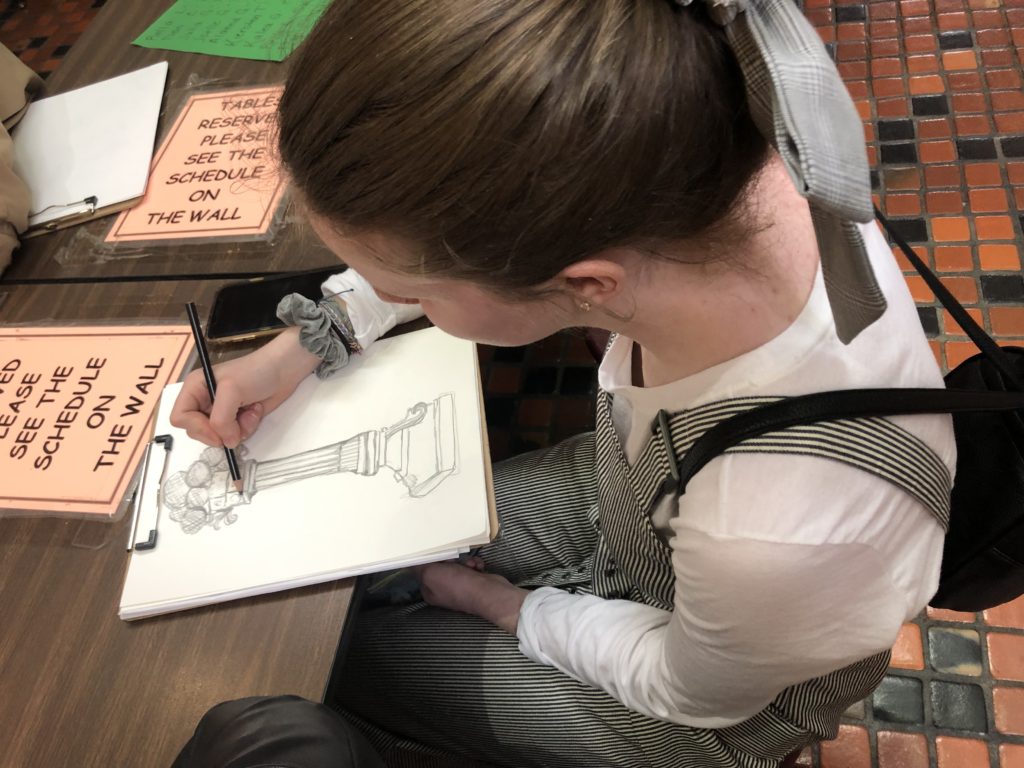
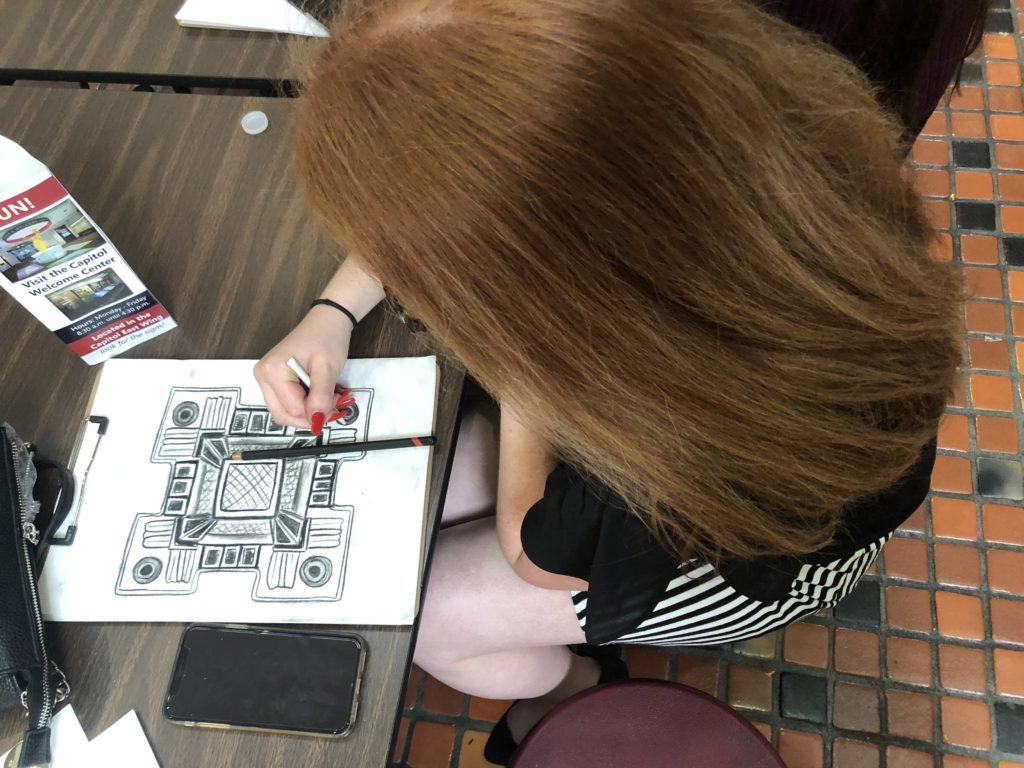
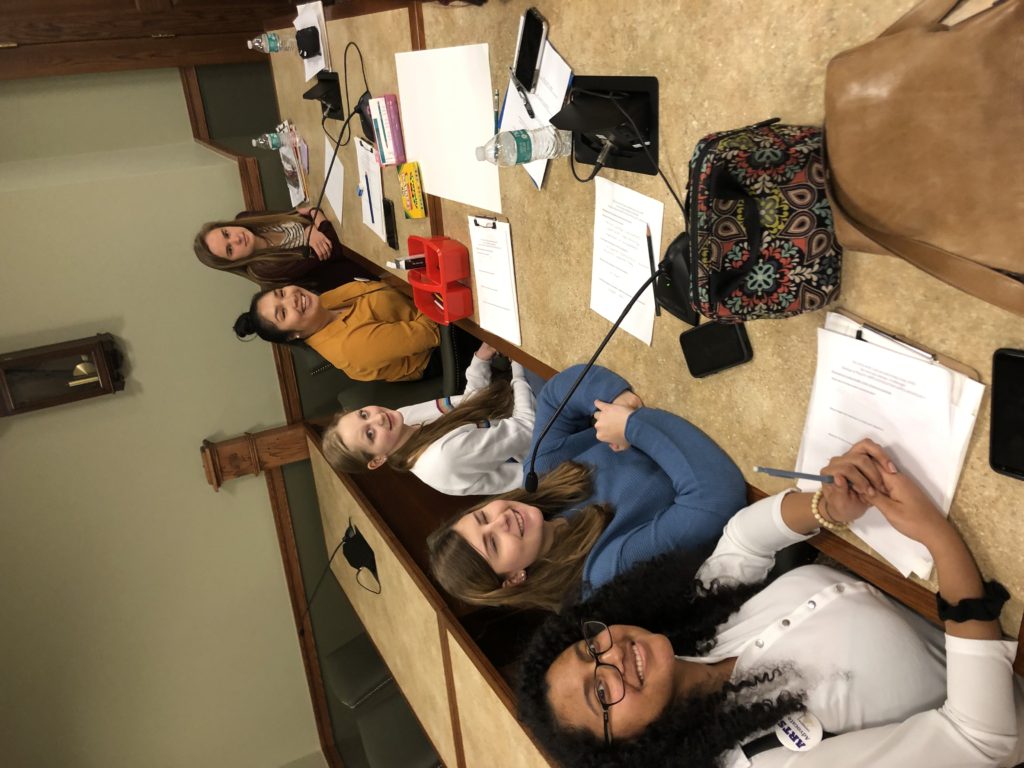
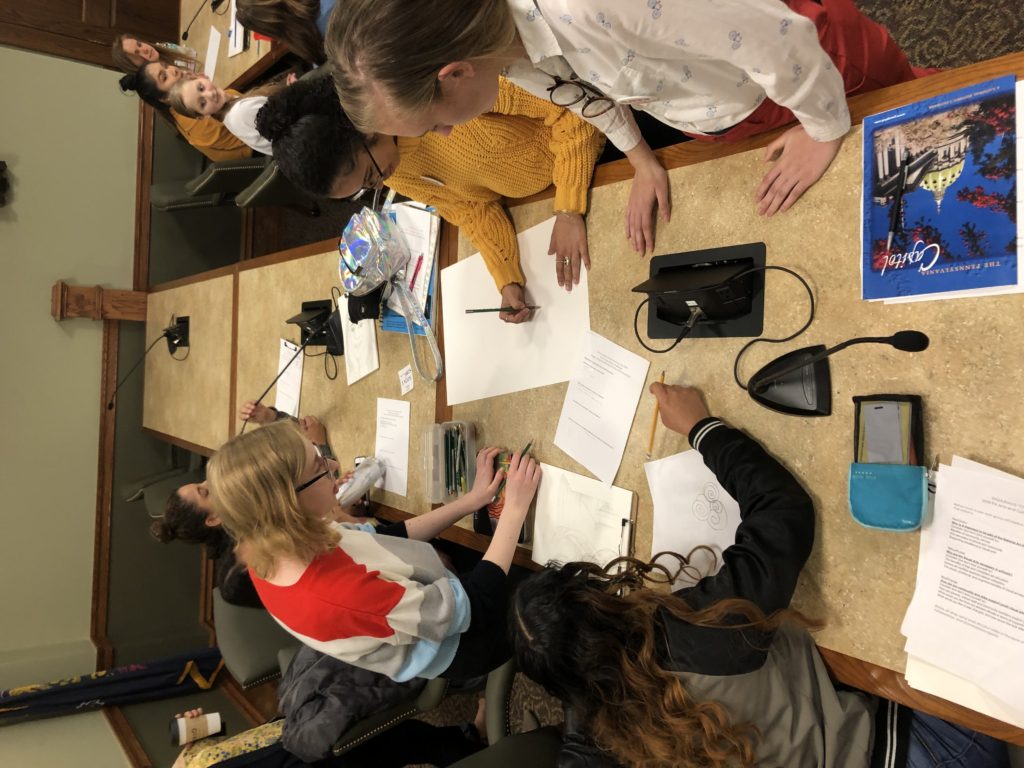
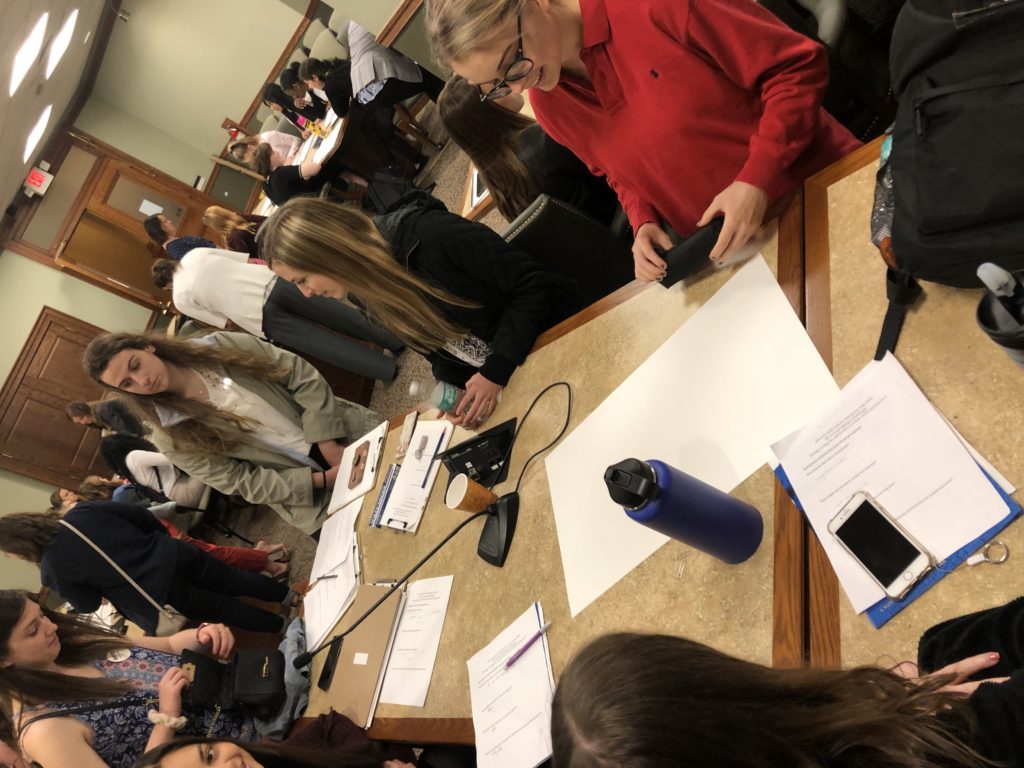
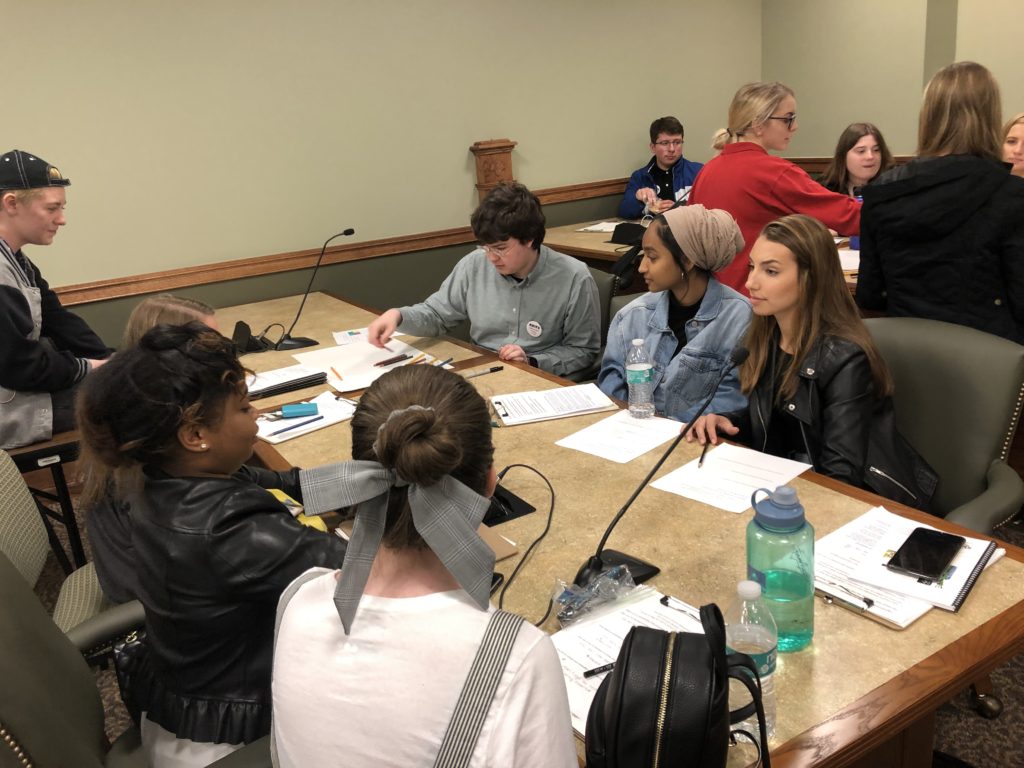
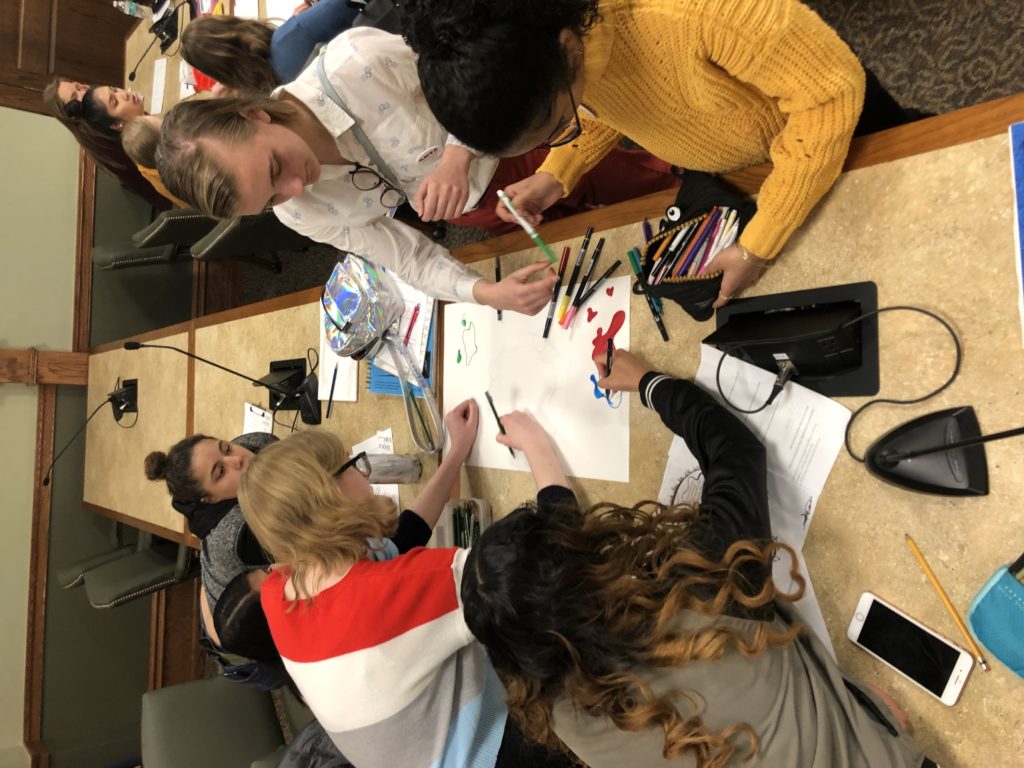
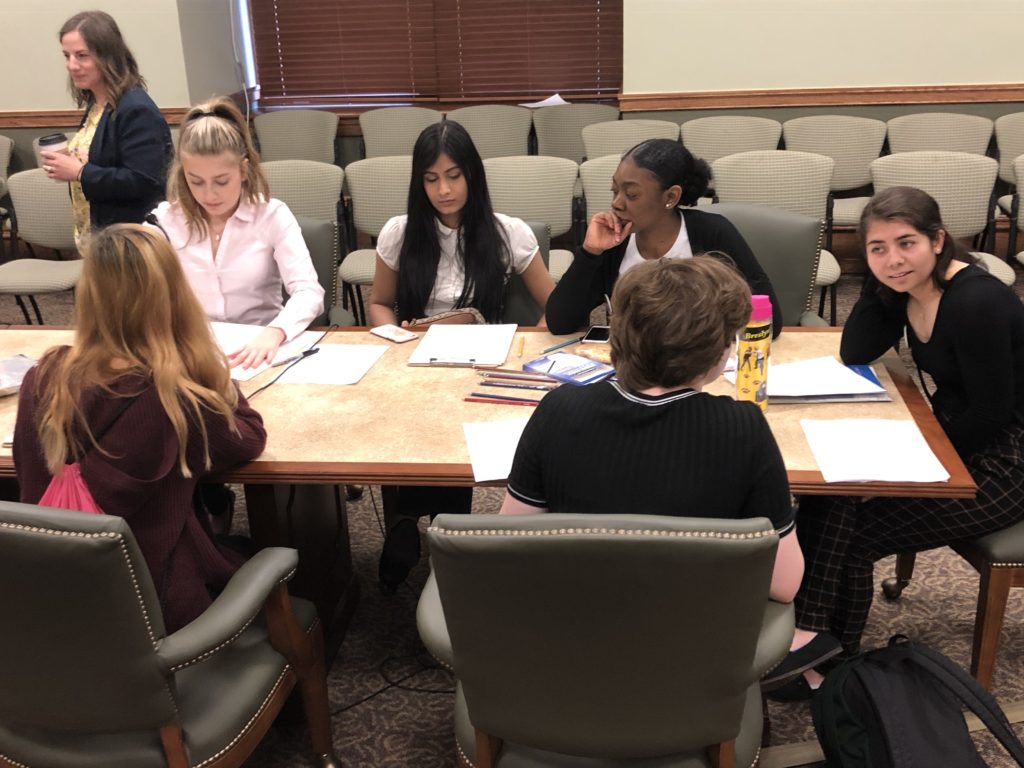
 D5 Creation
D5 Creation